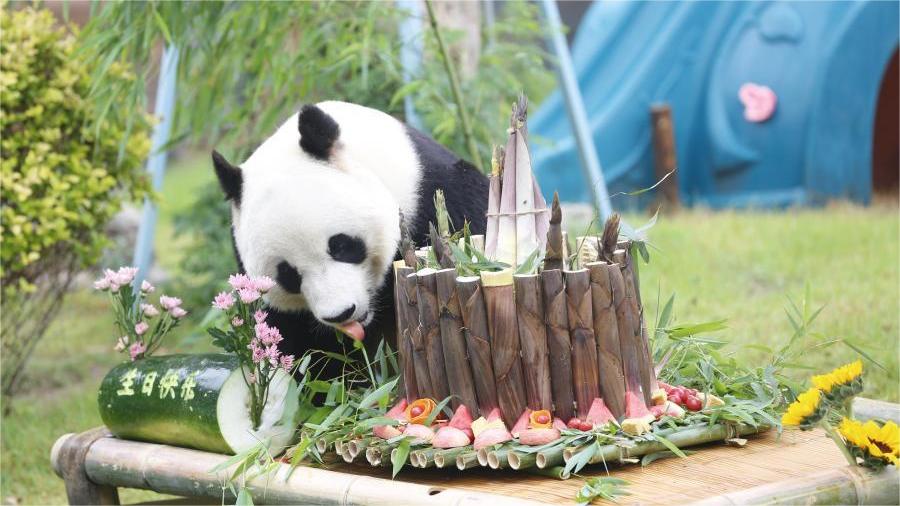Shenzhen makes strides in biodiversity conservation

This aerial photo taken on Nov. 11, 2022 shows a mangrove wetland in the Guangdong Neilingding-Futian National Nature Reserve in Shenzhen, south China's Guangdong Province. (Xinhua/Liang Xu)
Shenzhen, a densely populated megacity in south China's Guangdong Province, boasts rich biodiversity and was awarded the title of "Biodiversity Charming City" in 2022.
Nestled amidst towering skyscrapers and bustling streets, the Guangdong Neilingding-Futian National Nature Reserve is the only one of its kind located in the heart of a city, offering a tranquil view adorned with lush mangrove trees and graceful birds in flight.
Shenzhen has recorded 2,218 species of wild vascular plant species, 651 species of native vertebrates, and serves as a wintering ground for approximately 100,000 migratory birds annually.
In January 2024, the appearance of a Chinese white dolphin in Shenzhen's Yantian Port attracted significant attention.
Chinese white dolphins have exacting standards for water quality, and their frequent sightings in Shenzhen's waters demonstrate the success of the city's involvement in the construction of the Guangdong Pearl River Estuary Chinese White Dolphin National Nature Reserve.
At the Guangdong Neilingding-Futian National Nature Reserve, the expansive mangrove forests provide high-quality habitats for a variety of bird species, making it an important wintering ground for migratory birds.
The nature reserve is home to 353 species of higher plants, including 20 species of mangroves from nine families. A total of 272 bird species, including 60 species under key state protection, have been recorded at the nature reserve.
"With a comprehensive system of nature reserves, including marine areas, wetlands, and forests, Shenzhen has effectively protected its most representative ecological resources," explained an official from the municipal planning and natural resources bureau of Shenzhen.
Shenzhen is home to 25 different types of nature reserves, including 23 on land and two in the sea.
"We collect and protect plant resources, and when appropriate, we help them return to nature to expand their populations," said Wang Hui, deputy director of Fairy Lake Botanical Garden in Shenzhen.
Through ex-situ conservation, the garden has given protection to 440 plant species under key state protection, as well as 757 rare and endangered plant species.
On the shores of Dapeng Bay in Shenzhen, a group of people has been tirelessly involved in coral planting, protection, and restoration since 2012.
Wang Xiaoyong, secretary general of the Shenzhen Dapeng Coral Conservation Volunteer Federation in Dapeng New District, has been involved in coral planting for over 10 years.
Through its collaboration with government departments, the federation has established two pilot coral protection areas at sea, helped promote the planting of over 6,000 corals at Daya Bay in Shenzhen, and rescued over 500 fragments of damaged corals, said Wang.
These efforts highlight Shenzhen's commitment to promoting social participation in ecological conservation.
In recent years, Shenzhen has dedicated substantial efforts to establish itself as a "city of nature education," hosting diverse nature education activities to foster public involvement in conservation efforts.
The city has 23 nature schools, 49 nature education centers, and 200,000 environmental protection volunteers, records show.
Photos
Related Stories
- Int'l cultural industries fair sees fruitful cooperation
- Shenzhen hosts venture capital event in Beijing, eyes innovation boost
- A close look at 20th Int'l Cultural Industries Fair in Shenzhen
- A glimpse of int'l cultural industries fair in Shenzhen
- China's Shenzhen pilots vehicle-to-grid charging to cut peak load
- China's first pet lounge opens at Shenzhen airport
- Regular flights from Shenzhen to Mexico open
Copyright © 2024 People's Daily Online. All Rights Reserved.









